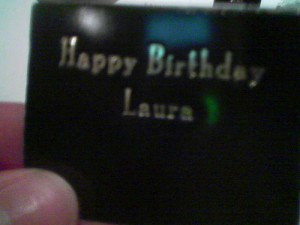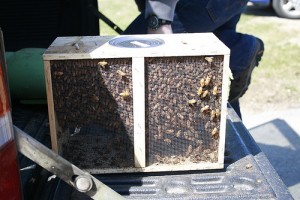Lughnasa Waxing Back to School Moon
After a nap, I headed out again, the second of three busy days. This time I went to Jax, a return to the 1950’s with dark wood paneling, a lovely buffet table and Jean-Marie’s  milestone birthday. Happy Birthday, Jean-Marie matchbooks, the whole Jax touch. I met Jean-Marie’s daughters and spent a good bit of time chatting with her oldest who until recently was a graduate student under Marla Spivak, the bee goddess of the UofM. She and Jim of Nature’s Nectar, whom I saw later, convinced me to try and keep my old parent colony.
milestone birthday. Happy Birthday, Jean-Marie matchbooks, the whole Jax touch. I met Jean-Marie’s daughters and spent a good bit of time chatting with her oldest who until recently was a graduate student under Marla Spivak, the bee goddess of the UofM. She and Jim of Nature’s Nectar, whom I saw later, convinced me to try and keep my old parent colony.
The elegance of the Jax setting made for a dignified tone. Other docents came in and I spoke with Joannie Platz, Toni de Lafour, Marilyn Smith and a few others. I saw Allison as I left. She has a very fashionable red knee brace.
A long drive out to Stillwater to Nature’s Nectar to pick up Apiguard, Fumigilin-B, shims, hive stands and corks. Jim’s a knowledgeable guy and easy to talk to. He gave me some good advice about the parent colony. He requeens every year, so the need to eliminate the old parent colony is not so high. With tests and assays I should be able to keep on top of the mites and other diseases, too.
The drive back from Stillwater was in pouring rain; the first time I’ve driven in really heavy rain this year. Back home now and dry.
Tomorrow is the docent lunch at noon, then the UTS event at 6:00 PM.

 mentor, had a traumatic autumn and we just didn’t get together quite enough.
mentor, had a traumatic autumn and we just didn’t get together quite enough.